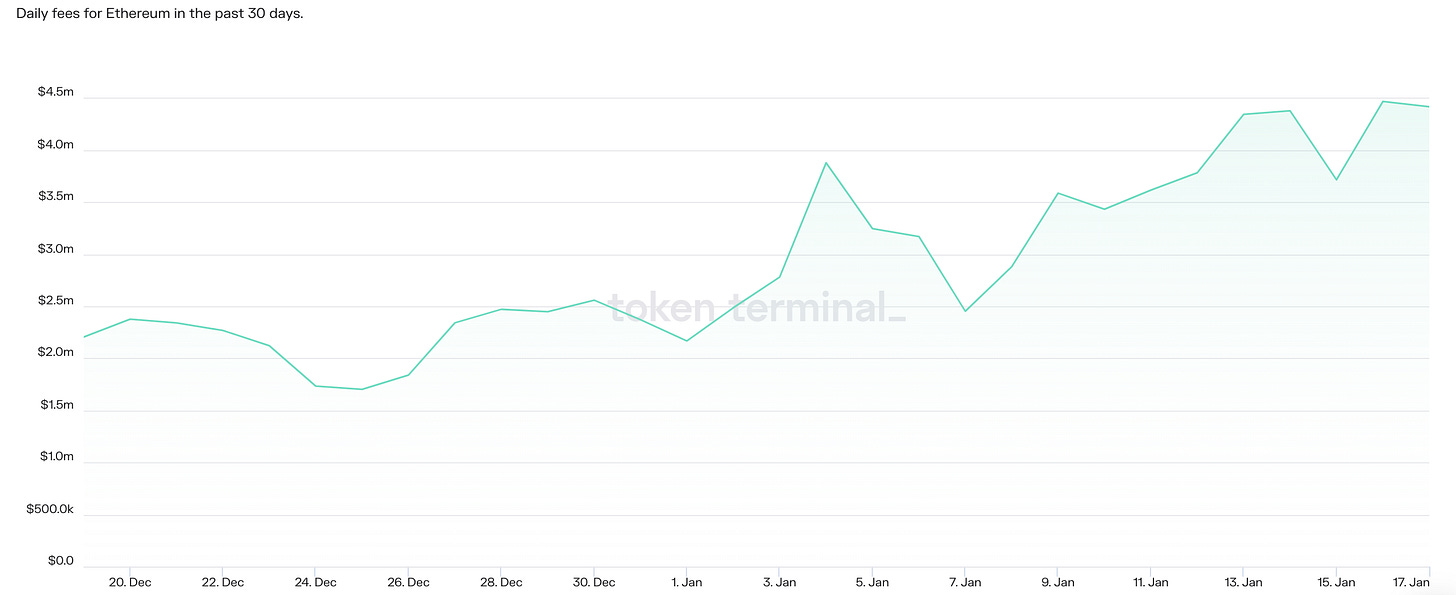Uniswap's Value Prop
The DEX generated $24.9m in fees the past month
Bitcoin’s value is tied to mining, ether’s is to staking
Uniswap is the most well-known decentralized exchange
Its daily volume has been as high as $2.1 billion in the past month
UNI cryptocurrency captures some of that value - if it is staked

I’ve taken a look at the value proposition of bitcoin previously and how mining affects it. Ether was given a look previously as well with its staking incentives. Now it’s time for Uniswap. Subscribe to get updated on more of these dives into crypto valuations.
Ethereum is one of the largest networks that allows its holders to reap fees via staking. Fees on Ethereum totalled $87.6 million over the past 30 days according to data aggregator Token Terminal.

Searching on Token Terminal finds that after Ethereum, the decentralized exchange Uniswap has reaped the second-most fees.
A decentralized exchange, or DEX, Uniswap is built on Ethereum smart contracts. It allows users to “swap” different Ethereum tokens for one another, including stablecoins.
Over the last 30 days, trading on Uniswap has generated $24.9 million in fees which is 0.3% per trade.

Uniswap’s Shadow Fee
There is a company behind Uniswap. It’s called Uniswap Labs, which has its own Ethereum-based token, UNI. The company could someday charge a “protocol fee” of 0.05% to help its finances, but currently that is not turned on.
Uniswap offers a valuable service in the form of decentralized crypto exchange. It’s a key cog in DeFi for exchanging assets. On January 14, Uniswap had $2.1 billion in volume, a 30-day high, according to CoinGecko.

So, there’s an actual company behind Uniswap, and it has a cryptocurrency. It’s possible to calculate a price-to-fees ratio for Uniswap. According to Token Terminal, Uniswap trades at around 16.2x price-to-fees. That is calculated by dividing circulating market cap of tokens by annualized fees.
All About Those Tokenomics
This isn’t saying that the price-to-fees (P/F) ratio is a direct comparison to price-to-earnings (P/E) ratios for publicly traded companies which many use to evaluate stocks.
But it’s at least possible for an investor to evaluate this. Every cryptocurrency has a uniqueness in terms of what many just label as “tokennomics”. P/F ratios might help to cut through that bullshit.
For example, Uniswap Labs right now is dependent on the value of UNI in order to operate. And that could change by turning the protocol fee, which is part of the DEX’s governance, on.
Liquidity providers on the Uniswap get a share of trading fees in return for staking. So the fees aren’t direct revenue that translates in some way to UNI holders - they have to stake for additional benefit.

That should be taken into consideration from an investment perspective on what the UNI cryptocurrency is really worth. At 16.2x price-to-fees, Uniswap sits in the middle of Token Terminal’s list of price-to-fees rankings.
Pros vs. Cons of UNI
Uniswap’s brand, daily exchange volume and price-to-fee ratio make UNI a DeFi bellwether cryptocurrency.
However, the protocol fee looms. As explained in Uniswap’s documents, that 0.05% fee could be added sometime in the future. That most likely would happen if Uniswap experienced a financial crunch or other less-than postive conditons.
The added fee would make UNI less desirable. Uniswap is definitlely the biggest and brightest DEX out there. But UNI could be an intensely market-dependant cryptocurrency since its directly affected by the crypto exchange’s dynamsics.

